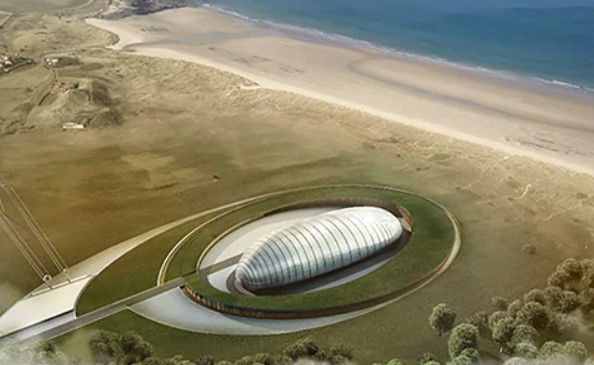Born the son of a coal miner in South Yorkshire in the 60’s, I grew up in a region then dominated by deep mining and heavy industry. That coal industry with all its risks and damaging environmental consequences no longer exists, but the demand for energy and power continues to grow both here in the UK, and also globally, where innovation in the sector is key to lifting huge tracts of the world’s population out of poverty.
Nuclear power as a product can be delivered in a standardised, replicable form with certainty, in volume and at pace
The Committee on Climate Change recently forecast that by 2050, the need for energy in the UK will likely near double what it is today. Energy production has to switch towards low carbon sources, meaning an estimated 40-55 GW of extra low-carbon electricity will be needed to power the UK to achieve net zero.
To meet this demand, we need to utilise a mixed system containing significant proportions of renewables, such as wind, wave and solar, with firm, low-carbon power – of which nuclear will be key.

Can we affordably deliver low carbon power with nuclear at its core?
The UK nuclear industry and its capabilities has respect and recognition around the world. Today the nuclear industry supports 80,000 jobs in the UK across power generation, decommissioning and associated research (NIA Job Map).
The UK has led the world in many aspects of civil nuclear power since 1958 when Calder Hall in West Cumbria first provided power to the grid and on any given day is providing up to 40% of all low-carbon power across the UK at around 2.5% of the carbon intensity of gas production for example.
So why isn’t there more nuclear in the mix today?
The answer is at one level very simple - it’s perceived as expensive and difficult to deliver. This, however, assumes nuclear power is delivered through building gigawatt-scale reactors which are hugely-complex construction and engineering projects. These require large sums of investment across a long period of time before they begin to generate power. For example, Hinkley Point C will generate 3.2 GW and is expected to cost over £20bn across 10 years of construction.
There is however an alternative option.
Thinking differently about delivering nuclear power
Nuclear power as a product can be delivered in a standardised, replicable form with certainty, in volume and at pace. When Henry Ford first envisioned the production line concept in 1913, his thoughts were not on the engine design, but how to lower cost and offer a transport solution at scale. Less than twenty years later, 15 million affordable cars had been delivered.
The UK has the ability to create innovative ideas for delivering nuclear technology, at a low price that can make a real and lasting contribution to net zero goals – and then support other nations in their own missions to move to low-carbon power.
Leading industrial companies are working with the UK’s innovation centres, national labs and academic institutions to deliver a UK Small Modular Reactor (UK SMR), which will develop a lasting capability vital to net zero delivery.
With £235m from Government, more than matched funded by industry and other investors, the foundations of a UK SMR industry and all its supporting services and systems can be developed. This new concept can build a pathway for future progress in advanced nuclear in support of co-generating hydrogen, synthetic liquid fuels and other challenging areas of decarbonisation.
The plan and the pay off
To achieve a UK SMR there is a shared objective across construction, manufacturing and digital technologies: to design, develop and license a product that can be built and delivered repeatedly with confidence. The UK SMR includes many design innovations which drive out cost and schedule risk, with perhaps the most important one being a ‘seismic’ raft which sits below the power station and effectively isolates it from the ground. This means everything above the ground is designed and manufactured in modern factories to ‘plug’ into the foundation, supporting a key project principle to design once and deploy many times.
Analysts predict in the near term, the programme will directly support 1,200 jobs in high value manufacturing, engineering and construction through 2024, creating over £1bn GVA in the UK. The programme can position the UK as a leader in the market which could be conservatively considered to exceed £300 billion. Capturing just a fraction of this market can grow a UK SMR sector to support up to 40,000 jobs in the UK for decades, including many roles for newly-trained engineers, technicians and manufacturers in UK regions most in need of long-term economic growth.
My father never wanted to see me follow in his footsteps into coal mines, and he didn’t understand climate change, but he wanted a secure future for his son and, in times of great hardship, funded my education. I’m grateful for the opportunity he provided, and I hope he would be proud of my efforts. It’s time to deliver solutions for the UK.
READ MORE ABOUT SMALL MODULAR REACTORS
Government funding targets SMRs
UKRI commits £18 million to SMR programme
In depth: exploring the potential of small factory built nuclear reactors



Glasgow trial explores AR cues for autonomous road safety
They've ploughed into a few vulnerable road users in the past. Making that less likely will make it spectacularly easy to stop the traffic for...